Ministry of Health and Family Welfare
Understanding population-related issues, Tailoring solutions, and Driving progress
Posted On: 10 JUL 2024 6:38PM
Understanding population-related issues, Tailoring solutions, and Driving progress
July 11, 2024
The world’s population is more than three times greater than in the mid-20th century. From an estimated 2.5 billion people in 1950, the global human population surpassed 8.0 billion in mid-November 2022.
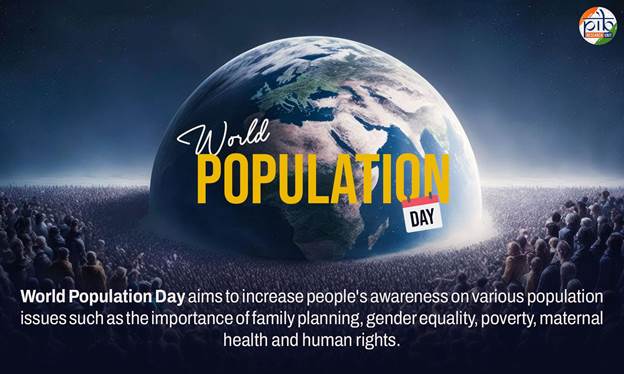
Established by the governing council of the United Nations Development Programme (UNDP) in 1989, World Population Day stems from the global interest generated by the "Day of Five Billion" (when the world population reached five billion people) observed on July 11, 1987.
World Population Day aims to raise awareness of critical global population issues. These include the significance of family planning, gender equality, poverty alleviation, maternal health, and human rights.
In December 1990, the United Nations General Assembly, through resolution 45/216, decided to continue observing World Population Day to foster awareness of population challenges, including their intersections with environmental sustainability and socioeconomic development. Since its inaugural observation in over 90 countries on July 11, 1990, the day has been commemorated around the globe to highlight various vital issues.
"Leave no one behind, count everyone" is the theme for World Population Day 2024.
World Population Trend
The global population has experienced a remarkable evolution as it took hundreds of thousands of years to reach 1 billion, but in just two centuries, it grew sevenfold. In 2011, the world population surpassed 7 billion, and in 2021, it reached 7.9 billion. Projections suggest it will reach around 8.5 billion by 2030, 9.7 billion by 2050, and 10.9 billion by 2100.
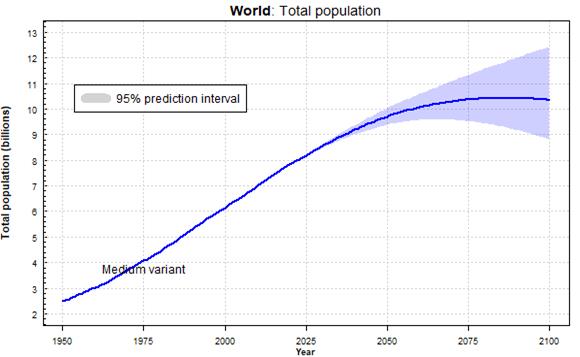
This rapid growth is primarily driven by improved survival rates to increased reproductive age, alongside significant changes in fertility rates, increasing urbanisation, and accelerated migration. These trends are set to impact future generations profoundly
Population in India
India (1.4 billion) remains one of the most populous countries of the world, representing nearly 17 percent of the world’s population. In April 2023, India’s population reached 1,425,775,850 people, matching and then surpassing the population of China.
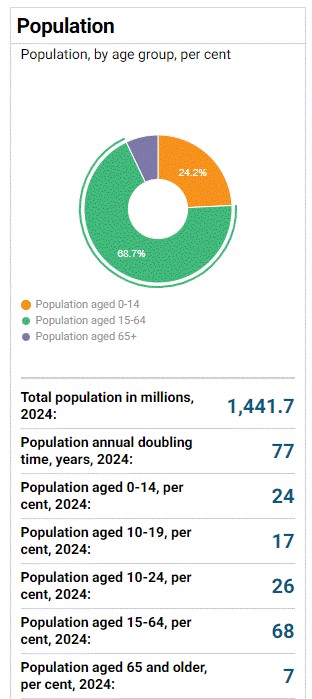
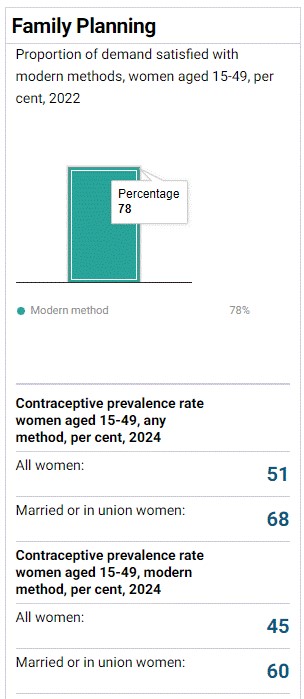
Notably, India was the first country in the world to have launched a National Programme for Family Planning in 1952.
At present, India adds 15 million people to its population base every year, which is by far the largest in the world. The problematic aspect is that India accounts for about 17 percent of the world population worth only 2.2 percent of the world's land mass.
It is noteworthy that India's ongoing population growth is projected to continue for several decades, carrying implications for economic development, employment, income distribution, poverty alleviation, and social welfare measures.
Population Policy in India
- National Population Policy 2000
The government policy adopted on February 15th, 2000, aimed to address immediate needs in contraception and healthcare infrastructure, integrate services for basic reproductive and child health care, achieve replacement-level Total Fertility Rate by 2010, and stabilize population growth by 2045.
However, the policy faced criticism for its narrow focus on contraception and sterilization at the expense of essential prerequisites like poverty alleviation, improving living standards, and enhancing education.
- Population Regulation Bill, 2019
The Population Regulation Bill of 2019, introduced by Member of Parliament Rakesh Sinha in July 2019, proposed penal measures for individuals with more than two living children. These penalties included potential disqualification from elected office, reduction in financial benefits, and decreased entitlements under the public distribution system.
- Uttar Pradesh Population (Control, Stabilization and Welfare) Bill, 2021
The proposed bill focuses on promoting a two-child policy, stipulating that individuals who do not comply within the state will face disqualification from contesting local elections, pursuing government positions, or receiving any form of sponsorship. Additionally, efforts will be made to stabilize the population through initiatives addressing infertility, reproductive health, and reducing maternal and infant mortality rates. The policy also aims to provide better support, healthcare, and nutrition to adolescents aged between 11 and 19 years, as well as elderly care services.
Landmark Initiatives by Government of India
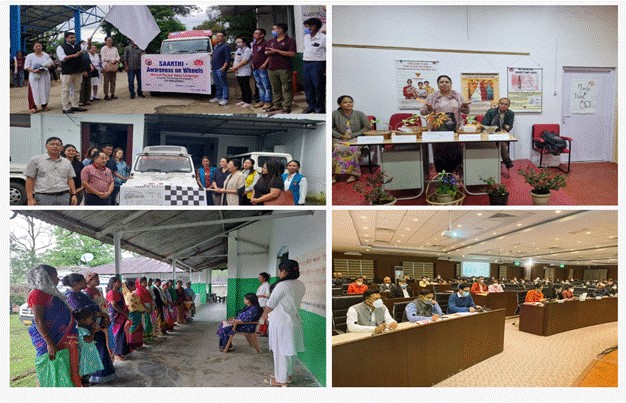
- Mission Parivar Vikas (MPV): MPV is being implemented across 13 states aimed at significantly enhancing access to contraceptives and family planning services. These states include seven high-focus states (Uttar Pradesh, Bihar, Madhya Pradesh, Rajasthan, Jharkhand, Chhattisgarh, and Assam) and six northeastern states (Arunachal Pradesh, Manipur, Meghalaya, Tripura, Nagaland, and Mizoram). The mission substantially increases access to contraceptives and family planning services in146 high fertility districts with Total Fertility Rate (TFR).
- Expansion of Contraceptive Choices: The existing contraceptive methods such as Condoms, combined oral contraceptive pills, Emergency contraceptive pills, Intrauterine contraceptive device (IUCD), and Sterilization are supplemented by new options including Injectable Contraceptives (Antara Programme) and Centchroman (Chhaya).
- Compensation Scheme for Sterilization Acceptors: This scheme provides compensation for loss of wages to the beneficiary undergoing sterilization, as well as to the service provider team involved in conducting the procedure.
- Post-partum Intra-uterine Contraceptive Device (PPIUCD) Services: These services are offered immediately post-delivery to enable women to choose a contraceptive method that suits their needs.
- Scheme for Home Delivery of Contraceptives: Accredited Social Health Activists (ASHAs) facilitate the delivery of contraceptives directly to the homes of beneficiaries, ensuring convenience and accessibility.
- Family Planning Logistics Management Information System (FP-LMIS): A dedicated software system is utilized to streamline the forecasting, procurement, and distribution of family planning commodities across all levels of health facilities, ensuring efficient supply chain management.
Way Forward
India stands at a pivotal juncture in its history, with a demographic composition that presents a unique opportunity rather than a concern. As of 2021, more than half of India's population is under the age of 29, with over a quarter being 14 years or younger, according to government projections.
Policymakers must harness this demographic dividend by focusing on enhancing opportunities for India's youth rather than viewing it as a demographic burden. Key strategies should include upgrading skill sets among the youth, as current data from the All India Survey on Higher Education highlights significant structural inequalities in India's higher education sector. By ensuring equitable access to quality education and vocational training, India can empower its young population to become highly productive contributors to the economy.
References
https://loksabhadocs.nic.in/Refinput/New_Reference_Notes/English/15072022_141200_1021205175.pdf
https://nhm.gov.in/index1.php?lang=1&level=2&sublinkid=821&lid=222
https://pib.gov.in/PressReleasePage.aspx?PRID=1695597
https://www.un.org/en/observances/world-population-day/background
https://www.un.org/en/observances/world-population-day
https://www.un.org/en/global-issues/population
https://www.unfpa.org/data/world-population/IN
*****
Santosh Kumar/Sarla Meena/Ritu Kataria/Abhinandan Sharma
(Backgrounder ID: 151925)
Visitor Counter : 872